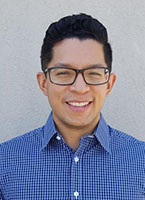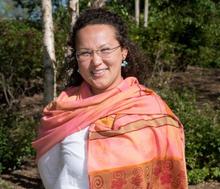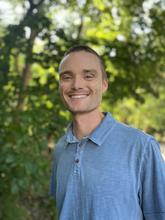Community Resilience Team

Christopher T. Clavin

Christopher T. Clavin currently serves as the Senior Advisor for Resilience of the Engineering Laboratory at the National Institute of Standards and Technology (NIST). Mr. Clavin’s research in the Community Resilience Program focuses on the development and deployment of community-scale resilience planning methods and decision-making processes. In this role, Chris leads the Community Resilience Group’s research to advance and deploy NIST’s Community Resilience Planning Guide. This research project aims to incorporate and deploy scientific advances in resilience research for use by communities, private and non-profit sector entities, through the use and creation of planning and decision support tools.
David Butry

Dr. David Butry is an Economist and the chief of the Applied Economics Office of the Engineering Laboratory (EL) at the National Institute of Standards and Technology (NIST). Dr. Butry’s research on topics related to community resilience involve developing standard methodologies for community resilience economic analysis and decisions and leading research on topics of wildland fire, multi-hazard analysis, and community-scale disaster resilience. His research background and interests are in the areas of applied microeconomics and econometrics, with specialization in the fields of natural resource economics, environmental economics, and spatial statistics.
Kurtis Goad

Kurtis Goad is a research social scientist in the Community Resilience Group of the Materials and Structural Systems Division of the Engineering Laboratory (EL) at the National Institute of Standards and Technology (NIST). He holds a Master's Degree in Human Factors and Applied Cognition and a B.A. in Psychology from George Mason University. Within the Hurricane Maria Program, Mr. Goad is involved in a National Construction Safety Team (NCST) project, which investigates the role of emergency communications, among other factors, in public response for those under imminent threat from Hurricane Maria.
Juan Fung

Dr. Juan Fung is a Research Economist in the Applied Economics Office of the Engineering Laboratory (EL) at the National Institute of Standards and Technology (NIST). Dr. Fung’s research interests lie in the topics of in community resilience, with an emphasis on research into costs of improving building performance for seismic events and quantifying community-scale benefits from improving resilience.
Ken Harrison

Dr. Ken Harrison is an Operations Research Analyst in the Community Resilience Group at the National Institute of Standards and Technology (NIST). Dr. Harrison's research at NIST involves the development of models and decision-support tools for community resilience planning. He leads the “First-Generation Community Resilience Systems Model” project. The project involves development of an optimization-based decision support tool for community resilience planning. His research interests involve the use of mathematical modeling to support decision-making, with an emphasis on methods for decision-making under uncertainty and the development of mathematical programming-backed decision support tools. In addition to his research with the Community Resilience Group, Dr. Harrison is a researcher with NIST’s Hurricane Maria Program.
Michael Gerst

Dr. Michael Gerst is a Research Engineer in the Community Resilience Group of the Engineering Laboratory (EL) at the National Institute of Standards and Technology (NIST), where he leads a research team on the measurement of community resilience and the application of resilience indicators to planning and decision making. Current research thrusts are focused on developing the multiple types of validation methods needed to inform the efficacy of existing and proposed resilience indicators. Previous to working at NIST, Dr. Gerst was on the research faculties at the Earth System Science Interdisciplinary Center of the University of Maryland, College Park and the Thayer School of Engineering at Dartmouth College. He also held guest appointments at the University of Maryland’s Smith School of Business and the Advancing Systems Analysis Program at the International Institute for Applied Systems Analysis.
Therese McAllister

Dr. Therese McAllister is the Deputy Chief of the Materials and Structural Systems Division and a Research Structural Engineer in the Community Resilience Group. Dr. McAllister conducts research on community resilience, with a focus on the integrated performance of physical infrastructure systems and social and economic systems. She has expertise in structural reliability, risk assessment, and failure analysis of buildings and infrastructure systems. Her research supports the resilience of the built environment, from design and mitigation to recovery of function, through performance based design and the development of guidelines to inform codes and standards. Dr. McAllister is a Distinguished Member of ASCE.
William Hughes

Dr. William Hughes is a National Research Council (NRC) Research Associateship Program (RAP) postdoctoral researcher in the Community Resilience group at the Engineering Lab of the National Institute of Standards and Technology. He received his B.S. (2019) and Ph.D. (2023) from the University of Connecticut Department of Civil and Environmental Engineering with a focus on structures and applied mechanics. His research focuses on the resilience of infrastructure systems, including power systems, transportation networks, and residential buildings, to natural hazards, particularly hurricanes, wind, and flooding. By integrating physics-based and data-driven modeling, his work aims to improve predictions of hazard impacts on the built environment and people, helping to inform more effective mitigation and adaptation strategies.
Christina Gore

Dr. Christina Gore is an economist in the Applied Economics Office of the Engineering Laboratory at the National Institute of Standards and Technology (NIST). She currently works on economic research at NIST in Sustainability and Community Resilience.
Donghwan Gu

Dr. Donghwan Gu is a Professional Research Experience Program (PREP) research scientist in the Community Resilience Group at the National Institute of Standards and Technology (NIST). Dr. Gu’s research lies in measuring the sustainability of urban areas by focusing on the transition of the urban built environment and socioeconomic inequality. His research at NIST primarily aims to support communities in measuring and enhancing their ability to function after catastrophic disaster events. He conducts research in the “Development of a First-Generation Community Resilience Assessment Methodology” project, identifying and validating resilience indicators.
Jennifer Helgeson

Dr. Jennifer Helgeson is a Research Economist in the Applied Economics Office of the Engineering Laboratory (EL) at the National Institute of Standards and Technology (NIST). She currently leads the office's work on the "Economics of Community Resilience Planning." Her research interests are focused around survey assessments and economic analyses that consider behavioral aspects and approaches to dealing with environmental issues. Dr. Helgeson’s research revolves around resilience to hazards (shocks and stressors) in the built environment, with consideration for cost-effectiveness of community- scale mitigation and adaptation efforts.
Kaitlyn Semler

Kaitlyn Semler is the Administrative Office Assistant for the Community Resilience Group and the Engineering Research Support Group. She joined NIST in May 2024. Prior to joining NIST, she worked as a Permanency Social Worker at a foster agency in West Virginia.
Kelly Anderson

Kelly Anderson is a Research Social Scientist in the Community Resilience Group of the Materials and Structural Systems Division of the Engineering Laboratory (EL) at the National Institute of Standards and Technology (NIST). She received her Ph.D. in Geographical Sciences from the University of Maryland (College Park) in 2021 and her B.S.B.A. degree from the University of Florida in Economics in 2010. Dr. Anderson’s research interests include poverty, urbanization, and the effects of climate change on environmentally vulnerable and economically marginalized communities of the developing world. She has worked on a range of topics related to the social impacts of extreme weather, including changes to education and healthcare access, viability of rural and urban livelihoods, and migration. Within the Hurricane Maria Program, Dr. Anderson has worked since May 2020 on a National Windstorm Impact Reduction Program (NWIRP) project focused on the recovery of services provided by schools and hospitals and the role of these social institutions in the recovery of communities.
Dylan Sanderson

Dr. Dylan Sanderson is a National Research Council (NRC) Postdoctoral Fellow in the National Institute of Standards and Technology Community Resilience Group. Dylan’s research interests include the development and use of decision support tools for equitable community resilience planning. Dylan has worked on the development of IN-CORE and is also interested in modeling how policy decisions can increase community resilience. Prior to starting at NIST, Dylan obtained both his doctoral and master’s degrees in civil engineering from Oregon State University (OSU). His research experience at OSU includes working with the Seaside, Oregon multi-hazard testbed, development of a coupled urban change and hazard consequence model to evaluate community resilience plans, and development of a model to evaluate Oregon’s road and bridge transportation network under earthquake and tsunami hazards. Dylan previously worked for the U.S. Army Corps of Engineers’ Research and Development Center (ERDC) in the Coastal and Hydraulics Laboratory. Here, he was a principal investigator for two probabilistic lifecycle analysis models of coastal storm risk reduction, Beach-fx and G2CRM.
Maria Dillard

Dr. Maria Dillard is a Research Social Scientist for the National Institute of Standards and Technology’s Community Resilience Group and serves as Acting Director of NIST’s Disaster and Failure Studies Program. Her research is focused on community response to hazards and chronic stressors, the development of methods for measurement and modeling community resilience, recovery, well-being, and vulnerability, and the social dimensions of disaster. Dr. Dillard serves as Associate Team Lead for the NIST Hurricane Maria Program and Associate Lead Technical Investigator of the National Construction Safety Team (NCST) investigating the impacts of Hurricane Maria on Puerto Rico. She is also an Associate Project Lead for the Community Resilience Program’s research on the measurement of community resilience.
Tasnim Faiz

Dr. Tasnim Ibn Faiz is a Professional Research Experience Program (PREP) Postdoctoral Associate in the Community Resilience Group at the National Institute of Standards and Technology (NIST). His research interests encompass the areas of operations research, community resilience, and socio-economic and environmental sustainability. As a member of the “First-Generation Community Resilience Systems Model” project team, Dr. Faiz works on the development of decision support tools for community resilience planning using mathematical programming. The research project aims to provide community stakeholders with effective tools for mitigation and recovery planning.
Tiffany Cousins

Tiffany Cousins is a Research Social Scientist in the Community Resilience Group at the National Institute of Standards and Technology (NIST). Her role is to strengthen applied research and metrology using GIS and other research methods between the Community Resilience Program and the Disaster and Failures Studies Program. Ms. Cousins has a background in Geosciences, Geography, and Urban Planning. Tiffany has been developing her career around applying GIS and spatial data science in the disaster management cycle. She is an interdisciplinary GIS researcher who has worked with experts in public health, civil engineering, enterprise security, community engagement, and engineering education. Her work experience includes ad hoc data analysis and mapping for CDBG-DR grant applications and FEMA Match programs, loss avoidance studies, building interactive security risk assessments, and in-field survey data collection. Before NIST, Tiffany spent time in academia as an Instructor and Lab Manager. She taught Digital Mapping and Intermediate GIS where she helped students develop their GIS projects. As a GIS Lab Manager, she Initiated an issue management system to monitor and maintain hardware and software. She created the Department's GitHub to showcase student projects, share code, and maintain a data repository and a space for students to hold their data. At present, among other work, she is focusing on GIS analysis for the National Construction Safety Team’s Hurricane Maria investigation and accompanying the National Windstorm Impact Reduction Program (NWIRP) study. Tiffany hopes to expand her research at NIST on GIS-based field data collection and best practices, geospatial tools and methodology, and metrology of community resilience.
Contacts
For more information:
-
(301) 975-6078

